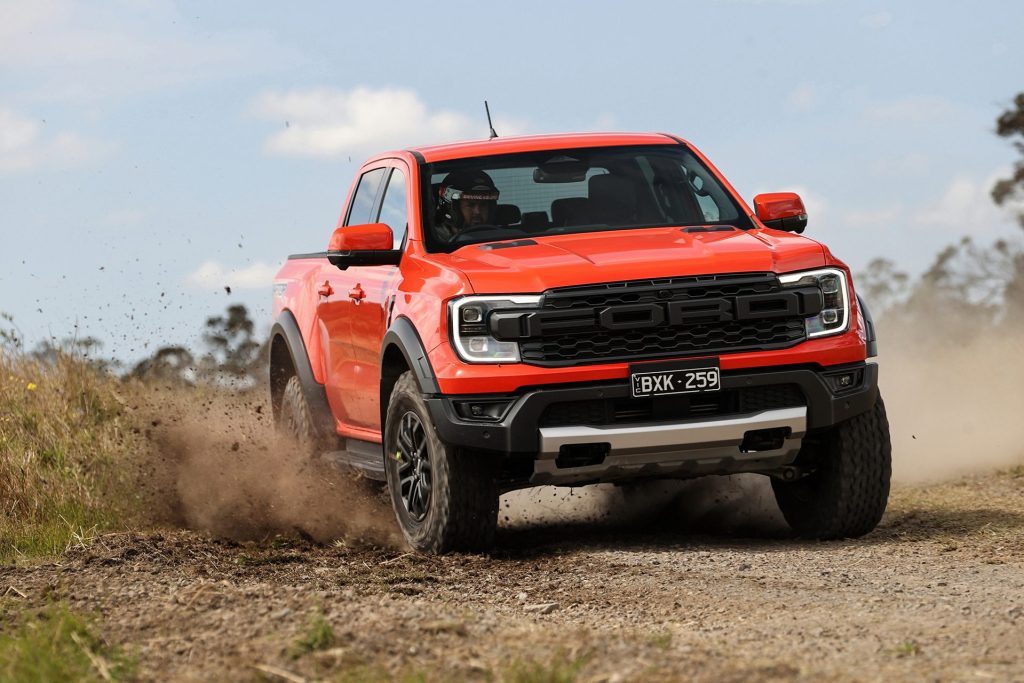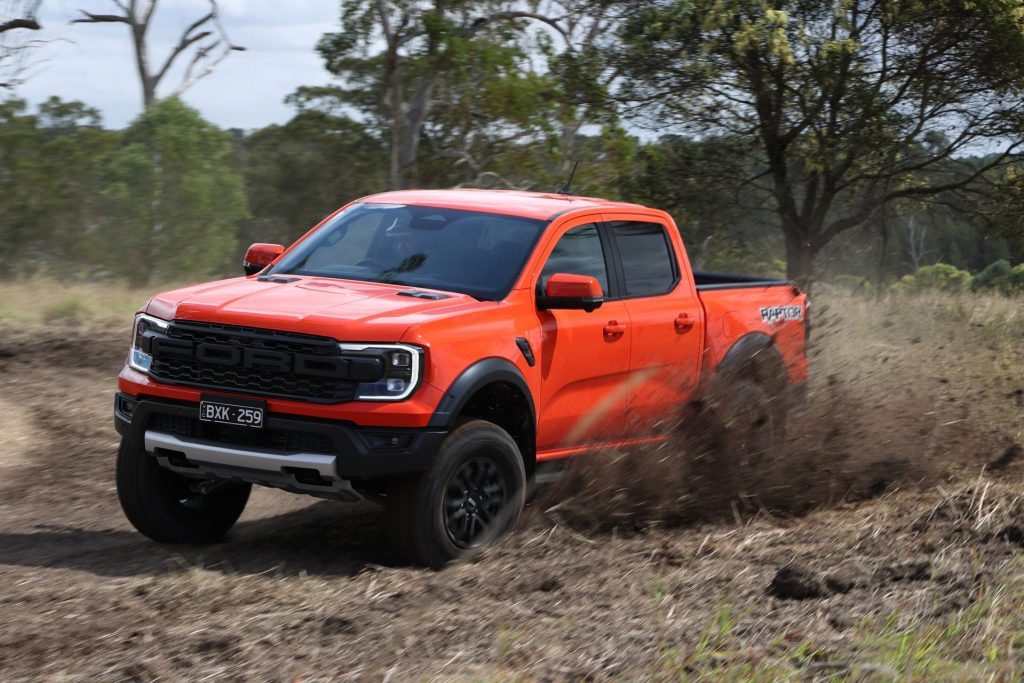2022 Ford Ranger Raptor first drive
Words: Tom Gasnier | Photos: Ford/Capture Factory/TG
Ford’s highly anticipated second-gen Ranger Raptor has finally arrived Down Under, we headed to Queensland, Australia to give it a thrashing.
Given the success of the previous Ranger Raptor, it stands to reason that Ford would follow it up with a version 2.0. Using their learnings from the first generation and taking customer feedback onboard, the new Raptor is stronger, faster and meaner than the model it replaces. This time around Raptor was co-developed alongside the rest of the Ranger/Everest/Bronco range which gave the engineers a lot more freedom when it came to producing a kick-ass truck. This forward planning meant that a bunch of changes (front wheels moved forward 50mm, chassis width increased by 50mm, rear suspension moved outboard of the chassis rails) were made to the base Ranger platform in order to make the Raptor a better vehicle. The Raptor gets additional chassis tweaks in the form of extra reinforcing for the c-pillar, tray, shock mounts, a unique spare tyre carrier and high-strength steel bash plates for the underbody.

It’s the suspension that really differentiates the Raptor from its Ranger brother. It still comes courtesy of Fox, but now features ‘live-valve technology’ which monitors both the driver and vehicle inputs 500 times a second and makes adjustments to the damping in real-time. And boy, can it take a hiding! Along with the shocks, the majority of the suspension components are all-new items exclusive to Raptor.

But the biggest change is the engine. Gone is the bi-turbo diesel (although this is still an option in some markets) and in its place resides an absolute fire-cracker twin-turbo V6 petrol engine boasting 292kW/583Nm and anti-lag technology. Thanks to a trick active exhaust system it even has an impressive bark to back up the bite. The engine is paired to an updated 10-speed auto (the only option, no one buys manuals anymore), and it’s a beaut, the shifts fast and smooth. There are large paddles for those who want to take control, but the ‘box is so damn good they’re all but redundant.

Styling has been dialled up too, again thanks to changes made to the standard Ranger. Raptor looks wider and meaner than ever before, the front end dominated by the distinctive ‘C-clamp’ LED headlights and that trademark oversized FORD grille. This thing looks tough.




The interior hasn’t escaped the Raptor treatment either. Special attention has been made to differentiate it from its workhorse origins. There are brand new ‘jet-fighter’ inspired seats, unique trim materials, 12-inch digital dash, roof-mounted auxiliary switches and heaps of cool detailing to make the cabin feel that little bit more special.




But what you really wanna know is how it drives right? Holy hecka! The first thing you notice is the angry growl from the exhaust when you prod the column-mounted start button (there’s a quiet mode if you like your neighbours). Stomp on the loud pedal and torque delivery is almost instantaneous, it simply grips and goes no matter how slippery the surface is beneath the BFGoodrich rubber. It genuinely shoves you back into the seat when you give it the berries. The noise and performance are quite simply grin-inducing.

We got to sample the RR on a high-speed off-road track (complete with yump), on road and also on a low-speed bush bashing loop. The high-speed track was fairly gnarly with some long gravel straights, a heap of twists and turns and some super-slick muddy sections. The Fox shocks do an incredible job of soaking up bumps that no one in their right mind would attack in a conventionally sprung ute at the pace we did. Hell, a stock Ranger would probably shake itself to pieces over the same terrain. With Baja mode selected (this optimises the throttle, engine, transmission, exhaust and shocks for max attack and backs off some of the safety nets) we had the Raptor sliding sweetly around the course (largely thanks to our skilled instructor telling us what to do, cheers James). The Raptor is extremely communicative, you get a real sense of what the wheels are doing and where the traction is at. And so, the tail can easily be provoked to slide progressively, even with a nut like me behind the wheel. I could’ve spent all day lapping the track, it was that much fun.

Going through the bush sections, we got to experience just how much grip is available on slick surfaces. We never once looked like getting stuck, despite our over-enthusiastic use of the loud pedal. There are diff locks front and rear for the trickier stuff and these are activated through the dedicated off-road screen. A new feature is ‘trail control’ a function of cruise control that maintains a set speed for hill descents or navigating tricky terrain without the need for pedal input from the driver.

There are now seven drive modes (Normal, Sport, Slippery, Rock Crawl, Sand, Mud/Ruts and Baja) to suit all sorts of terrains along with a user-customisable ‘R’ button (tunes steering, suspension etc) on the steering wheel. The four-mode exhaust also has its own dedicated button. Naturally, we spent most of the time with this locked to the loudest setting!

Our road drive was a little subdued thanks to Australia’s love of speed cameras, but we get the impression that this will be a hoot on your favourite back road. The new steering setup is sweet, delivering plenty of feel to your fingertips despite the wheels being shod in chunky tyres. The three-mode suspension works just as well on road as it does off and with plenty of power on tap, this arrives at the next corner at a rate of knots that no ute should. A switch to an electronic brake booster means the pedal feels more alive and responsive than before. I challenge you to drive one and not have a mile-wide grin on your dial.

If you’ve ordered one, you will not be disappointed. If you haven’t, you might be. There’s now at least a six-month waiting list and thanks to the incoming Clean Car Standard, the price will almost certainly go up next year (it’s currently $89,990 plus $5175 CCD). Customer deliveries will be starting soon and demo units should be in showrooms from October. Do yourself a favour and take one for a strop.
See the October issue of NZ Autocar Magazine for a more in-depth review.











